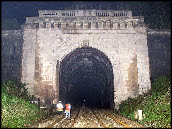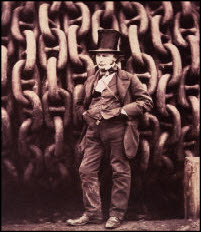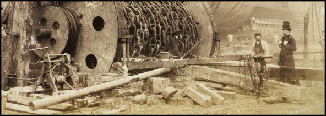




12th November 2010
Engineers & Engineering
Isambard Kingdom Brunel, son of the French Civil Engineer, Sir Marc Brunel, was one of the most ingenious, versatile and prolific engineers
of the 19th century. During his 53 years he worked tirelessly and built
25 railway lines, over a hundred bridges, five of which were suspension bridges; 8 pier and dock systems and 3 ships.
of the 19th century. During his 53 years he worked tirelessly and built
25 railway lines, over a hundred bridges, five of which were suspension bridges; 8 pier and dock systems and 3 ships.
He began his career in 1823 working with his father on the Thames Tunnel from Rotherhithe to Wapping which was completed in 1843.
In 1831 he won the competition for the design of the Clifton Suspension Bridge and in 1833 was appointed Chief Engineer for Great Western Railway. He began construction of the tunnels, bridges and viaducts
for the Great Western Railway line; a line which was to link London and Bristol. The most notable constructions were the viaducts at Hanwell and Chippenham, the Maidenhead Bridge, the Box Tunnel and Bristol
In 1831 he won the competition for the design of the Clifton Suspension Bridge and in 1833 was appointed Chief Engineer for Great Western Railway. He began construction of the tunnels, bridges and viaducts
for the Great Western Railway line; a line which was to link London and Bristol. The most notable constructions were the viaducts at Hanwell and Chippenham, the Maidenhead Bridge, the Box Tunnel and Bristol
1806 - 1859
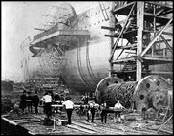

SS Great Eastern just before her launch in 1858
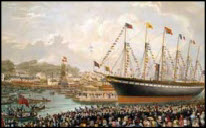
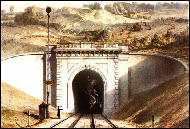
Box Tunnel
Temple Meads Station. When the Box Tunnel was first completed wary passengers - untrusting of 'modern' engineering, would disembark from the train and travel over the ridge through
which the tunnel - 3.25 km passed -
(around 2 miles long) by the traditional horse drawn carriage.
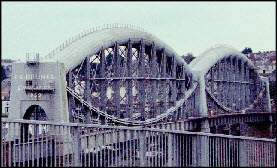
Royal Albert Bridge - Saltash
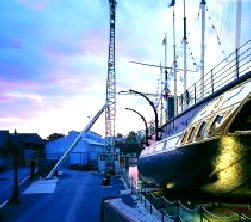
In 1837 Brunel launched his first ship, the Great Western. This was the first steamship ship to enter into transatlantic service. His second ship, the Great Britain, launched in 1843 ( see picture above ) was the first iron-hulled, screw propeller driven, steam powered passenger liner to cross the Atlantic. His third ship, the Great Eastern, launched in 1859 was the largest ship ever built up to that time. Nicknamed, “The Leviathan” she was designed to cruise non-stop from London to Sydney, but construction ran over-budget as engineers and workers ran into series of un-resolvable technical problems. Although a failure as a passenger
liner the Great Eastern was eventually used to lay
transatlantic telegraph cable.
transatlantic telegraph cable.
The Great Britain lay derelict for many years in the
Falkland Islands but in 1969 was brought back to the original docks in Bristol ( SW England for restor-

